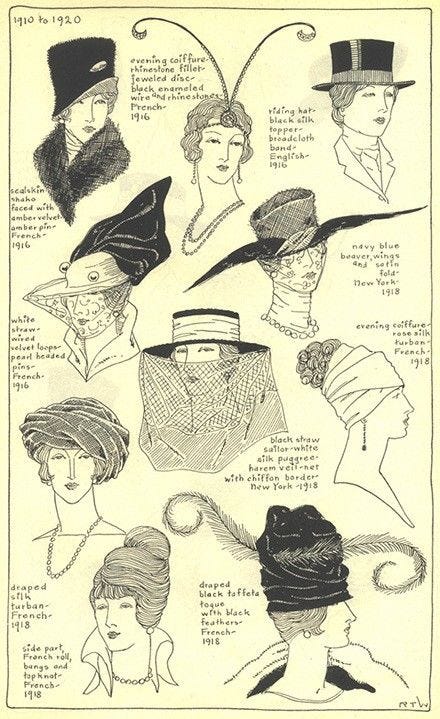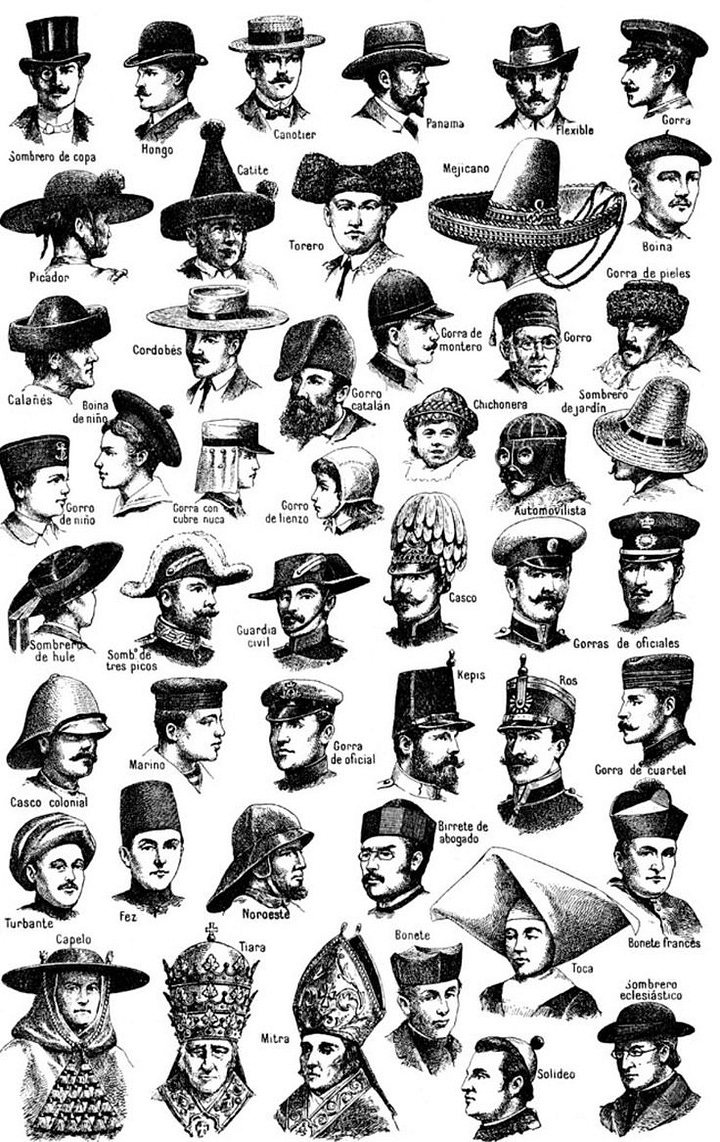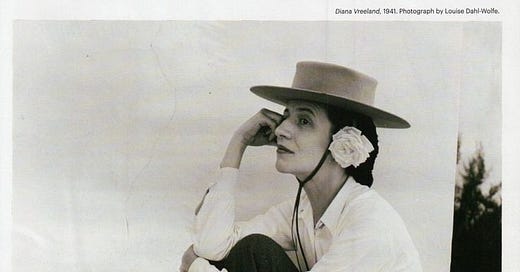“Its mysterious capacity to manifest not only familiar but also unknown and surprising elements of personality associates the hat with both shape-shifting and transformation”
from Hats/Headdress in ‘The Book of Symbols’
Today I met a man whom I've been meaning to contact for some time to reshape my hat. Before I speak of this encounter, let me circle about the tale…
I bought an Akubra a while ago - it's in the distinctive Spanish style called Cordovan - low crown, flat wide brim, black-ish felt. I have 3 hats in a similar style, with varying brim widths. Seems I have a “type”.
It’s beyond utilitarian - it’s shape-shifting
A hat, of course, is practical, offering much-appreciated protection from the sun. But my experience of wearing this particular hat is more than that. When I wear it, things seem to happen. To me and in the world.
Culturally, hat-wearing beyond caps and floppy broad-brimmed sun hats isn’t usual in urban landscapes. At least not where I am. So I guess I stand out. It's not a shy hat, so it makes me visible in a way I’m not without it. People remark - sometimes weirdly, sometimes sweetly and so I have odd encounters and more conversations with strangers than I ordinarily would.
I also feel different. I sense my focus and perception shifts. My body seems to hold a different charge and shape. As if in wearing it, I become imbued with particular qualities that make me steelier, bolder, taller. Sassier.
This doesn’t make me unapproachable, as I am approached more than I am as ordinary me. And the conversations often take on the flavour of the less ordinary as well.
In wearing the hat, do I somehow become what others see? Or does it activate what already exists there, in me, ready for expression? Or both?
Can a hat become an activating element that both imbues and stirs something from the depths of the unconscious of both wearer and observer?
All of it, the encounters and felt sense, is both disconcerting and exhilarating, and it feels like a conscious decision each time I choose to wear it.
I had no concept that this would happen when I purchased the hat, but the hat did speak to me when I saw it “yes, it's me, put me on” and once I tried it on, there was no choice but to get it.
A magic hat, perhaps? I have to be careful not to freak myself out.
Does the hat reflect or imbue personality?
Hats hide, reveal and augment who one actually is.
from Hats/Headdress in ‘The Book of Symbols’
Because of the hat’s association with the head, we can explore the significance of how something that covers or encircles the head, like a mandala (see Jung1) becomes a “mystical vessel of understanding and imagination”2.
In this context, my experience of perceiving the world and self differently isn’t so bizarre. Wearing it becomes a catalyst for an attitude shift and subsequently reorganises my thoughts and point of view. Behaviour begets response, begets attitude shift. The desire for a “personality transplant” is once again piquing up, so does the hat become like a bi-directional interface between an old and potential version of me?
As an object that sits between the universe and the crown chakra of the wearer, maybe something becomes translated through the quality and shape of particular headwear. Where wisdom from above is transmuted via the object into a new, accessible download.
What club do you want to belong to?
Wearing a hat can also be a performance and self-expression. There’s an element of play, aesthetics and fashion for sure. My hat is certainly silly, in some regards. I don't make the error of taking myself seriously in it. I’m not going for cool. What am I going for then? It's the feeling of wearing it, I think, and who it helps me to be.
Particular hats are also associated with particular roles, and can identify you as part of a group, social category or club. The individuality highlighted above is sacrificed for belonging.
The ten-gallon hat, the police hat, the tricorne pirate hat and the pointed witch's hat are immediately recognisable. We innately know the archetypal qualities of these roles and characters, and I’m curious what light and dark qualities are stirred when donning such hats. How does it help? How might it menace?
It’d be a mistake to assume what gets stirred is always benevolent or always evil.
Crowns are hats (or headdresses) worn by monarchs, albeit with the top bare. I recall a particularly evocative moment in the TV series The Crown, when Queen Elizabeth was imbued with her role during the coronation. The implication was that the religious and ceremonial act of crowning activated the qualities necessary for ruler and Queen.
What then of the role and attitude of the Cordovan wearer? In light and dark?


And then there are hats in stories and myths - some possessing magical qualities like the ordinary-looking hat that shoots bullets in Grimm’s tale, the sorting (mind probing) hat from Harry Potter, and the cap of invisibility in Greek mythology worn by Hades, and sometimes Hermes, the messenger and trickster.
If I could merge the magical and the mundane, hats can embolden a wearer to be and act in new ways, whether through a projection of self-image or the assumption of a role. Donning a hat can help you surpass limits or boundaries (mental, emotional) that you did not know existed, and so experience new aspects of self.
This might allow you access to a darkness you suppress, or a power you are afraid of, or a tenderness you reject.
What are some qualities you’d like to activate within you? I wonder what kind of hat might help you? Fantasise it.
Circle back to the beginning at the end - a spiral tale
Back to the fellow I met today. I’ll call him “Oliver”.
After a few lovely weeks courting my hat, I noticed its brim, typically boldly flat, began to curl upwards ever so slightly. It became a different hat, and felt unwearable. Or at least I no longer felt I had access to the version of self it seemed to imbue. Like it lost its magic? So I left it aside, but held an agenda to have it reshaped.
Fast forward to now and several weeks later, and it called me again - “put me on, put me back in shape” (ha!) and I arranged to drive for 30 minutes to a friendly old man's house to have it restored (I assumed age by voice quality on the phone).
Entering his house felt like I was entering a portal. It felt tenderly and unassumingly private. He took my hat to another room and I sat mesmerised by the home full of artefacts of his life. It felt like this man lived alone, but his house was full of evidence of a wife and children now grown, in faded photos, dated but once fashionable art, dusty exotic statues on consoles. It seemed paused in time, reflecting a life that belonged to a version of this man from other times. Poignant.
Amongst his private objects were boxes of private schoolboy hats ready for repair and hat stands. Tools and objects of his craft.
After 10 minutes, he came out with my rearranged hat, and once I donned it, with his cheerful approval, he proceeded to tell me how to prevent the curling in the future with a hot iron and a damp sheet. Freely offering me help and wisdom and curious facts about head shape and ethnicity - Slavs have either box or oval-shaped heads apparently. He charged me a tiny $10. He spoke of his work, pastimes, and apologised (unnecessarily) for his speech that was slightly slurred from an illness. We laughed. I was full of appreciation for this gentle man and his craft. The necessity of his quiet work in his unassuming suburban house.
These simple, mundane encounters truly give me life! I vibed off the exchange for hours afterwards, and he still lives in my brain now.
Once again, my hat delivered.
That’s it for now. Thanks for reading. I appreciate you taking the time.
If you enjoy reading my posts and want to support them, please consider hitting the like button or sharing with others who might enjoy the work. It helps me continue to bring these to you! All posts are free to all subscribers, but if you feel like you want to further support my work, consider becoming a paid subscriber (which entitles you to discounts on workshops and courses and luck!)
Mendy xx
References and footnotes:
Archive for Research in Archetypal Symbolism (ARAS). The Book of Symbols: Reflections on Archetypal Images. Köln: TASCHEN, 2010.
Stickley, Gustav. Craftsman Homes. New York: The Craftsman Publishing Company, 1909. free download here
C. G. Jung, Psychology and Alchemy, trans. R. F. C. Hull, 2nd ed. (Princeton, NJ: Princeton University Press, 1980), [47-48]
Archive for Research in Archetypal Symbolism (ARAS). The Book of Symbols: Reflections on Archetypal Images. Köln: TASCHEN, 2010 [534]







